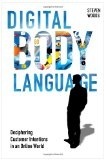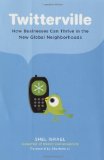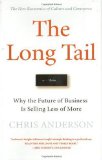PRMM Interview – Maria Korolov of Hypergrid Business
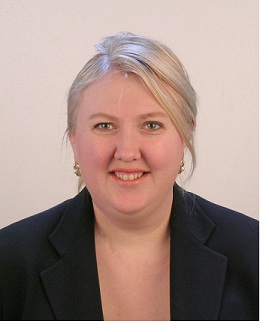
In this week’s interview, I touched base with Maria Korolov of Hypergrid Business, a leading online blog on virtual worlds and environments. In three short years, she’s grown her business and I asked her thoughts regarding the virtual environments industry, what she attributes her success to, and what it will take to be covered by Hypergrid.
Biography: Maria Korolov (formerly Maria Trombly) is founder and president of Trombly International, a Massachusetts-based company which runs emerging markets news bureaus for US business and trade publications. Her clients include CIO magazine, Computerworld, Securities Industry News, CardLine Global, Waters, Reed Elsevier’s PharmAsia News, and dozens of other publications.
Can you tell us a little bit about yourself and Hypergrid Business?
I launched Hypergrid Business about a year and a half ago, shortly after I discovered OpenSim, as an excuse to learn more about the platform and to talk to the folks building it. Since then, we’ve grown to over 10,000 monthly readers, over a dozen columnists and paid writers, and we’re having to turn away advertisers due to lack of space.
OpenSim, and enterprises uses of virtual worlds in general, are a hot topic right now. The fact that I’ve got over a decade of experience covering enterprise technology for publications like Computerworld is paying off here.
And I’m having a blast. It’s great to be in at the very beginning of a significant structural change in how the world works. The shift to the Internet was one such change. I believe that the shift to immersive environments will be another, and will be equally disruptive and transformative to the global economy.
We’ve got ambitions plans for our company. We’ve already launched a newsletter, are finalizing a vendor directory, have a 300-destination hypergrid travel directory up, are developing a video program, and are building a hyperport with multiple locations to cover all the possible hypergrid travel destinations. Further down the line, we might rent out space to merchants in our hyperports, or create an in-world advertising network. We are looking for both technology and business partners, as well as writers, researchers, marketers, and other positions — all part-time to start with, but with potential to turn into real careers as this platform evolves.
You mentioned that your readership has grown over the past three years. What would you attribute your growth to?
Part of it is simply organic growth. Someone reads an article, recommends it to a friend, and the friend becomes a reader.
Part of it is social media. We’re on Twitter, Facebook, Digg… we try to make sure that every article we post is linked to from the major sites, as well as from BusinessWeek and LinkedIn.
We also make it easy for people to find us. We’ve been a Google News publication for around a year, and we’re near the top of the Google searches for relevant terms. Inbound links help drive up our rankings — and the more useful stories we publish, the more people link to us, and the easier it becomes to find us.
Marketers are more like publishers today. What tips would you provide to marketers to help drive their content marketing strategy?
Marketing is a big part of growing a new technology segment. Outreach and education are often neglected by technology folks, who assume that if they build a better platform, then people will come. That’s not always true — people won’t come unless they know it’s there, and unless they know what benefits it offers them. If a vendor is lucky, there will be a group of users who are active and vocal and go out and promote the technology, like Ener Hax is doing with SimHost’s OpenSim hosting service. Smarter vendors will seek out these folks and offer them discounted hosting or other incentives to get them to use and talk about their platform, instead.
It’s also great to get your name out in as many channels as possible. Virtual events and conferences, and face-to-face events. News articles. Published editorials. Press releases. Company blogs. Twitter, Facebook, and LinkedIn feeds. The more a customer hears about a company, the more comfortable he or she gets with it. This is where marketing experts come in. An outside social media consultant, teamed up with a freelance writer, can do wonders to raise a company’s profile in the marketplace.
They need to get to know the social landscape, find out where their customers hang out, follow them, and provide value to these communities.
As a blogger, what three tips would you provide to companies seeking to be profiled by Hypergrid?
First and foremost, I want customer case studies, success stories, testimonials, first-hand accounts of how your product or service works. Of course, I wouldn’t turn down a juicy disaster story, either! A smart company will take a disaster and spin it into a positive story of recovery and evolution. You’re guaranteed to get my attention with something like that.
Next, I want statistics. How many users? How many events? What percent were satisfied? What were the growth rates? What are the benchmarks? I love numbers, and readers love numbers.
Finally, and least interesting to me, are new product and version announcements. A company can put out a press release every week trumpeting a minor new feature. At a certain point, that gets boring — and not very useful to customers.
Anything else that you would like to share?
I’m always looking for guest columnists to talk about topics of interest to enterprise users of virtual worlds.
Go Giants in World Series and Viral Video
In honor of the SF Giants in the World Series today, here is a viral video from a fan (Ashkon Davaran: twitter ashkonmusic) that has generated over 1 million views. This video captured the hearts of the SF Giants season. Maybe this video wouldn’t have gone viral if the Giants didn’t win the pennant, but that’s the point.
Going viral is part content, part timing and part luck. In this case, all three came together.
Go Giants!
#mptech Guy Kawasaki Keynote and 6 Twitter Tips

I attended MarketingProfs SocialTech conferenceyesterday, which brought together a great roster of speakers including Jeremiah Owyang, Robert Scoble, Michael Brito, Laura Ramos and more. The ending keynote was Guy Kawasaki on how to use Twitter for B2B marketing.
I plan to post summaries of the sessions I waas able to attend either today or tomorrow, but wanted to start with Guy’s presentation first. Why? Because he decided to give an unusual keynote.
Instead of a straight forward keynote about the strategy of Twitter, he gave a more stream-of-consciousness look into how he uses twitter on a day-to-day basis. After a long day of sessions and enormous amounts of ideas/information, I thought this was an entertaining way to discuss why Twitter is integral for marketing and how to leverage it.
Be Memorable, Be an Expert – Six Tips for Twitter
1. “Sucking up is key”– Guy’s point is that you have to be kind to people on Twitter. This is one of the best ways to get people to follow and retweet you.
The Takeaway: Tweets are just a collection of letters and words. Intent can sometimes be misunderstood. As such, follow the Golden Rule and you will avoid any misunderstandings.
2. Be an expert –Want more followers? Be interesting. To do this, monitor those who are considered experts. When appropriate, share interesting feedback or content to be seen as intelligent contributor. Once they retweet your contributions, you’ll then be seen as an expert in turn.
The Takeaway: Be very clear on your messages and how you want to position your company on Twitter. Everything you tweet should be related to this to further position you and your company as an expert.
3. Use search intelligently– There are many ways to use search. The question is which parameters are you using? Consider searching beyond just the content of the tweet to look at profile information (search by title, geography, bio) or even look at tweets to and from a person. This helps you to better do points 1 and 2.
The Takeway: Conduct regular search to identify new influencers within your space.
4. “Tweet is the new haiku” – You only have 140 character. In order to capture attention, you have to be interesting. If you’re not the best person, then find someone who can.
The Takeaways: The best person to contribute to your Twitter feed may not even be in the marketing or PR department.
5. Social content curation – One of the controversial issues with Guy’s Twitter feed is his use of ghost contributors to his feed. In his keynote, Guys highlights how he collaborates with this group like a managing editor would with his writers. If he sees something interesting, but is unable to tweet or blog about it, he assigns the story to one of the appropriate ghost writers. This helps keep his content fresh while providing a benefit to his readers.
The Takeaway: Twitter never sleeps but individuals do. Instead of one person monitoring your Twitter stream, have a group of individuals within a corporation monitor and response for you customer support or brand management needs.
6. Be like CNN – Don’t assume everyone sees your tweet the first time. Consider tweeting 2-3 time during different time zones so the maximum number of followers see your tweet. (Note: according to Guy, this is against Twitter’s terms of use. Though he hasn’t been terminated for such behavior, he is probably an exception. Hint to Twitter – another way to generate revenue?).
The Takeaway: Marketers are content creators and publishers. In the case of Twitter, what may seem “spammy” may actually be the best strategy to ensure your message is seen and read by your customers, partners, and prospects.
Conclusion
The keynote didn’t have a direct way of presenting how one could use twitter for B2B marketing. Rather, Guy shared a collection of ideas and thoughts of his personal use to inform marketers on what could work for them. And depending on your needs, each marketer could walk away with a deeper understanding of how to use Twitter for her own marketing needs – both from a tactical and strategic perspective.
If you watched the keynote (either in person or virtually), what did you think? Do you agree or disagree with me? What takeaways did you have?
Book Review – Digital Body Language by Steven Woods
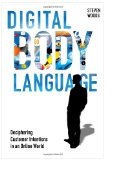 Over the past 10 years, we have seen the Internet and now Web 2.0 and social media technologies drastically change how marketers and public relations professionals engage with prospects, customers, employees and influencers online. As much of this interaction is being done online, the challenge is how marketers can “read” the digital signals to determine interest and intent. In a nutshell, how to provide the right information, to the right person, at the right time.
Over the past 10 years, we have seen the Internet and now Web 2.0 and social media technologies drastically change how marketers and public relations professionals engage with prospects, customers, employees and influencers online. As much of this interaction is being done online, the challenge is how marketers can “read” the digital signals to determine interest and intent. In a nutshell, how to provide the right information, to the right person, at the right time.
That is the premise of Steven Woods’ book, Digital Body Language. As co-founder of Eloqua, a marketing automation company, Steven provides insight into how marketers can translate these digital signals to increase the effectiveness of their marketing programs.
While the book is written with the marketer in mind, PR practitioners can benefit by reading this book as well. The step-by-step look into the customer’s digital psyche will help PR professionals understand the challenges that their marketing counterparts face. PR can help marketers understand behavior triggers; thereby recommending strategies, content and programs that drive these objectives forward. PR moves from being a “brand awareness” vehicle to a strategy that can pinpoint why and what will impact a customer’s behavior and interest.
For example, most executives want to business coverage regardless of how this coverage will or will not impact the bottomline. Yet, you strongly recommend a vertical program based on budget, time and objectives. If you can highlight how a vertical outlet program drove X% interest target prospects which uncovered $X in sales opportunities for a similar client, then not only will C-Level executives pay attention, but PR will also earn a seat at the table.
Isn’t this a strong value proposition?!
Conclusion
Steven provides marketers an understanding of the new digital body language. His approach is straight-forward with case studies to provide real-world implentation stories combined with helpful tips. I recommend this book for all PR practitioners and those entering the marketing field.
Let me know what you think of the book below in the comments or if you have any other must-read books.
I met Steven Woods at the Eloqua Experience 2010 Conference in October 2010.
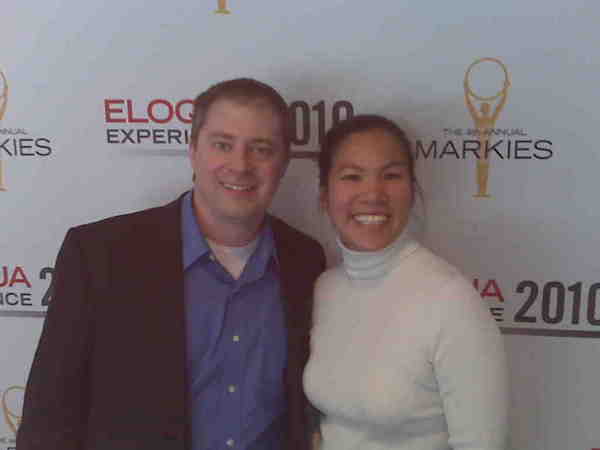
PRMM Interview – John Grosshandler
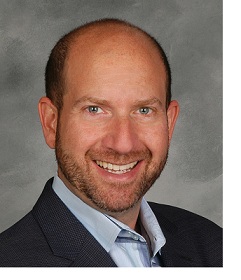
As part of the PRMM Interview series, I am interviewing thought leaders in PR, marketing, social media, and virtual events to hear about innovations, trends and technologies impacting our industry. This week, I asked virtual events vetaran, John Grosshandler is Director of Virtual Engagement with Maritz, to provide insight on the evolution of virtual events, challenges facing the industry and future trends. Here is a brief bio (Note: I was previously employed by Inxpo):
In 2004, John launched a first of its kind virtual trade show called eComXpo which became the highest-grossing, longest-running virtual trade show ever held. In 2005, after initially being their first customer, John joined InXpo, the virtual event platform provider that powered eComXpo. While there, he was the Virtual Event Strategist on hundreds of virtual events for associations (e.g. HIMSS, National Association of Realtors), corporations (e.g. Cisco, ATT) and publishers (e.g. UBM, Ziff Davis). While at InXpo, John authored the virtual event industry’s first Best Practices Guide. In his role at Maritz, John is responsible for their virtual event offerings, including supporting their channel partner Freeman.
Tell me a little bit about yourself and how you got into virtual events?
My background has been in sales and marketing roles for cutting edge technology solutions. After a successful 8 year run at a software firm pre/during/post the tech bubble, I had the opportunity to start my own business. In 2004, I launched a start-up around the idea of a virtual trade show aimed at eCommerce marketers. While there had been a number of attempts at virtual trade shows before mine, most of them were quite boring and I thought a business could be built around a more engaging type of virtual event.
How has the industry changed since you’ve started?
The evolution in this space has been extraordinary on many fronts. First has been the realization that the technology is only one component of a successful event, and that you need to spend at least as much time on the strategy, content and marketing. As a result, agencies like Maritz, Freeman and others are building practices to help event organizers put on higher quality events with less effort. Another evolution has been around the types of events held. From 2004-2008, almost all the action was publishers putting on virtual trade shows to replace lost revenue from their declining print ad sales and subscriber base. In 2009, you started to see associations more effectively creating hybrid extensions to their physical conventions. 2009 is also when more and more corporations starting leveraging virtual for a variety of events, ranging from sales meetings to user groups. A welcome change has been the technology platforms themselves, which increasingly have very robust functionality and can handle ever-increasing numbers of virtual attendees. Finally, there’s less talk these days about purely virtual events, and more about hybrid and blended events which I believe is the future.
Adoption of virtual events & meetings technology has increased significantly due to the recession. What challenges do you see for mainstream adoption of this technology?
Although the adoption has increased significantly, we’re still only scratching the surface. One report suggests the virtual event space will grow to $18 billion in five years, so we’re still in the “early adopter” phase. To cross the chasm to mass adoption, I think three things need to happen a) the technology needs to become more self-service and less expensive; b) virtual event platforms need to be effectively ported to mobile devices and c) events funded by virtual exhibitors need to deliver more value to those sponsors.
2011 is just around the corner and it’s the time of year for future predictions. What do you see happening for the industry in 2011?
I see 2011 as the “Year of the Hybrid”. The idea that more and more physical events will have virtual extensions, either as pre, during or post the physical event. Whether those virtual extensions are focused on driving more attendees to the physical event, or helping you reach others who weren’t able to make it to the physical event, these extensions are the “killer app” for virtual technology.
Any additional thoughts that you would like to share?
An exciting new use of the technology allows corporations to create virtual extensions to their physical trade show booths. Even if the show organizer doesn’t have a virtual extension to the event as a whole, top tier sponsors are realizing that their own virtual extension can help build buzz, drive attendance to their physical booth and provide a more effective follow-up mechanism for booth visitors, as well as those that didn’t make it to the physical event.
Technorati verification: 9ZGN6GBWBMAT
#EE10SF – Joe Payne, CEO of Eloqua – Keynote Summary

I’m currently attending the Eloqua Experience Conference in San Francisco and will provide quick summaries of the keynotes/presentations that I attend.
Joe Payne, CEO of Eloqua, gave a keynote presentation this morning titled Unleashing Your Revenue Engine. Simply, the keynote highlighted the concept of Revenue Performance Management or RPM.
RPM in a Nutshell
The idea is to provide sales and marketing with a consistent way to measure and report efforts back to the C-Suite. For example, looking at days leads outstanding (DLO), which analyzes the number of days of marketing quality leads (MQL) to closed sales.
Eloqua is proposing a single framework – called the C-Suite 16 (“Suite 16” for basketball fans), which provides reports across all industries. With this framework, C-level, sales and marketing can pinpoint key questions to identify opportunities and grow the company versus focusing on “marketing is giving us bad leads” or “sales isn’t working the leads.”
Conclusion
Too often, we hear about the friction between sales and marketing. With a consistent language and methodology, this gap can finally be closed, allowing sales & marketing to drive corporate growth forward, cooperatively. Kudos to Eloqua if it succeeds in developing this common language.
Beware of “Speeds and Feeds” PR

Photo by Gregg Salomon
When kick-starting a PR program, the main challenge is creating awareness about the company, executives and products/services within the industry and to prospective customers. In the pursuit of immediate results, the tendency is to pitch and secure media coverage about the features and functions of a product or solution. And based on this initial success, subsequent PR efforts solely focus on product upgrades, improvements and other similar “speeds and feeds” details.
However, focusing on speeds and feeds has its drawbacks:
* Elevating product over value proposition. Your company becomes known for the product features and functions versus the value proposition that your company solves, which
* Pigeon-holes your company in the minds of your customers, prospects and influencers. This creates a situation where you have
* Minimal thought leadership compared against your competitors. Your company is seen as providing a specific product versus positioning your company executives as thoughts leaders who are driving the industry forward.
* And this hinders your consultative sales efforts. Your salesforce requires sales materials that highlight how your solutions, services and products solve a business problem. By focusing media coverage on features and functions, your not arming your salesforce with the right tools.
Conclusion
Let’s be clear. I’m not advocating that you favor thought leadership in place of speeds and feeds. Rather, you have to implement the right mix of PR tactics to achieve your PR, marketing and business objectives.
Do you agree or disagree? Are there any other drawbacks?
About
Favorite Service
Recent Comments
- on Going Virtual Isn’t Necessarily the Answer to Replacing Your Physical Events
- on Going Virtual Isn’t Necessarily the Answer to Replacing Your Physical Events
- on Going Virtual Isn’t Necessarily the Answer to Replacing Your Physical Events
- on Going Virtual Isn’t Necessarily the Answer to Replacing Your Physical Events
- on Going Virtual Isn’t Necessarily the Answer to Replacing Your Physical Events
Ads by Google
Favorite Books
Marketing Blogs
PR Blogs
- KD Paine's Measurement Blog
- Micro Persuasion
Virtual Events & Meetings Blogs
- Cisco Virtual Environments
- It's All Virtual
- The Webinar Blog
- Virtual Edge Institute

 Follow
Follow Cece Salomon-Lee is director of product marketing for Lanyon Solutions, Inc. and author of PR Meets Marketing, which explores the intersection of public relations, marketing, and social media.
Cece Salomon-Lee is director of product marketing for Lanyon Solutions, Inc. and author of PR Meets Marketing, which explores the intersection of public relations, marketing, and social media. 